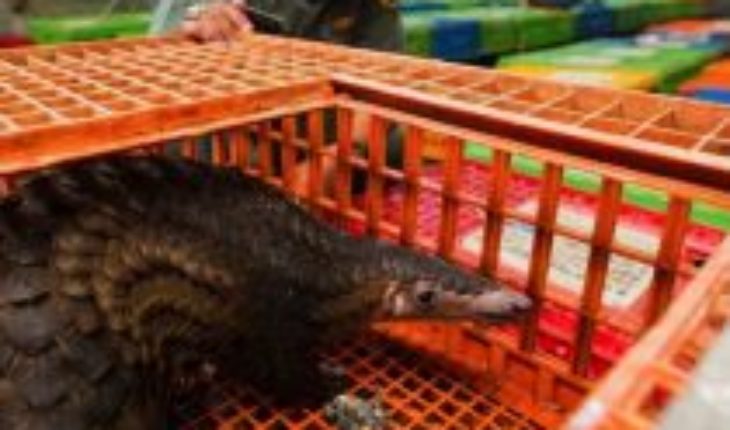
The World Health Organization has categorized coronavirus disease (COVID-19) as a pandemic, in light of its spread worldwide. Since the first cases emerged in the Chinese city of Wuhan last December, there has been much speculation—and misinformation—about the origins of the virus. And while scientists suspect that it may have come from a market in Wuhan when an animal was consumed or dismembered, spreading to the human population from there, the problem is far from being solved.
To better understand the origin of coronavirus and what can be done to stop the future spread of animal diseases to humans, the Wildlife Conservation Society (WCS) and Global Wildlife Conservation have partnered to produce a number of new Infographics.
Credit: WCS
WCS also provides regular updates on wildlife-related issues surrounding COVID-19, and has turned to Twitter to clear up some of the most common rumors about the disease. These range from the demonstrably fake that the virus was manufactured in a laboratory, to the unfounded (for example, that we know for sure which host animal transmitted the disease to humans).
“The evolutionary or ancestral host was likely to be a bat,” Chris Walzer, WCS’s executive director of health, told Mongabay. “What we don’t know is how the virus got to humans and [a través de] what a possible intermediary guest passed.”
Coronaviruses are a group of viruses with exceptionally high mutation rates known to exist in bats, rodents, camels and cats, making them ideal for jumping from hosts animals to humans. Viruses that caused outbreaks of Middle Eastern Respiratory Syndrome (MERS) in 2012 and Severe Acute Respiratory Syndrome (SARS) from 2002-2004 are classified as coronavirus.
Viruses mutate naturally and can be recombined, sharing different components to create new viruses. Therefore, wildlife trade and meat markets, where several living species are held together and slaughtered on the same surfaces, prove to be a perfect breeding ground for new pathogens.
“Animals are caught in the wild (or raised alternately on a so-called wildlife farm) and transported to a market, where they interact with other species from other places,” Walzer said. “Here, animals are confined under stressful conditions, exchanging excrement and therefore viruses before being slaughtered at the site. This allows blood and organs to be exposed and increases the interface with humans.”
Bats are thought to be the evolutionary host of COVID-19, although the virus passed to humans through another animal. Photo: Rhett A. Butler.« It’s just a numbers game,” Walzer said. “If only enough species come together and they are allowed to share viruses, and then many people are put in contact with the animals and their parts, then invariably you will have a virus that can enter a human cell and replicate and, in rare cases , to be transmitted from human to human.”
Given the clear risks to both biodiversity and human health, WCS and GWC scientists are calling for a permanent ban on wildlife trafficking and live animal markets.
The COVID-19 epidemic can mark the dividing line to stimulate action on wildlife trafficking in Southeast Asia. China has announced a ban on the consumption of wild animals; Vietnam followed with a ban on both trade and wildlife consumption.
“Taking China’s leadership, I think there will be a domino effect in the region, as all these neighboring countries are highly interdependent and their markets are connected,” Walzer said. “These countries have legislation for livestock. Now they’re asking about how to better regulate wildlife. What laws, experience and monitoring are necessary to actually implement this legislation in a meaningful way?”
“Public attention can fade quickly. But once the legislation comes into force, it’s there to stay.”
Pangolins are the most trafficked animal in the world, but it has not been confirmed that pangolins were the intermediate hosts of COVID-19. Photo: Courtesy of Priyan Perera.Cambodia, Laos and Indonesia have not yet made a formal statement about bans, but Walzer says these countries have indicated that they are looking to regulate wildlife trade and investigate what needs to be done.
“The world needs country after country working hard to prevent future viral outbreaks by banning wildlife trade and consumption,” Hoang Bich Thuy, director of WCS Vietnam, said in a statement. “If only one country continues to allow wildlife trading, communities around the world will continue to suffer and pay the price.”
*Main image: A well-fed pangolin adult covered in red clay after partying on a termite mound. Photo: Tikki Hywood Trust.





